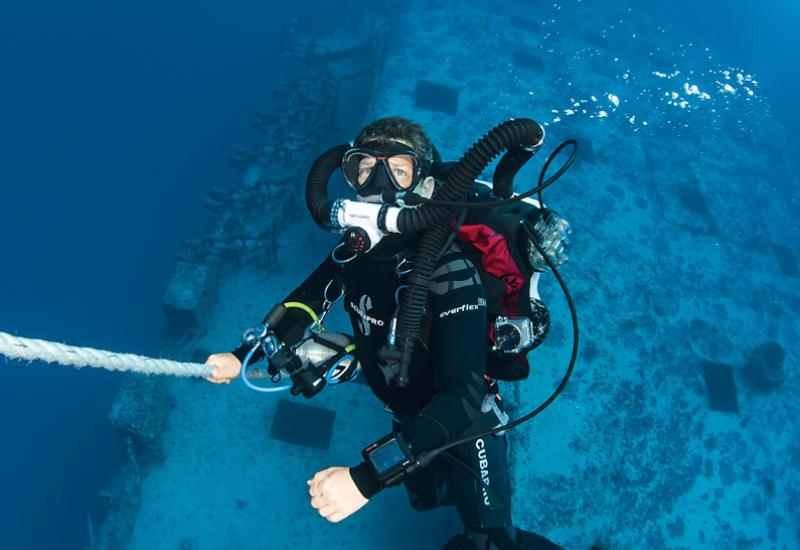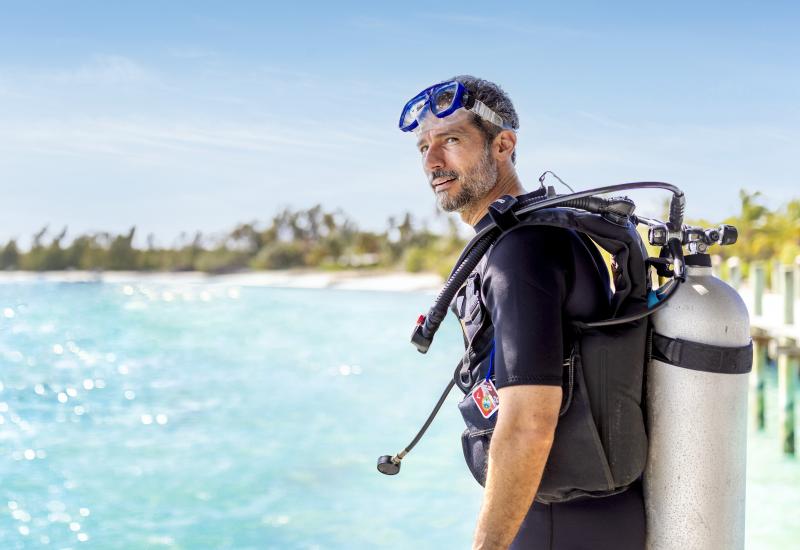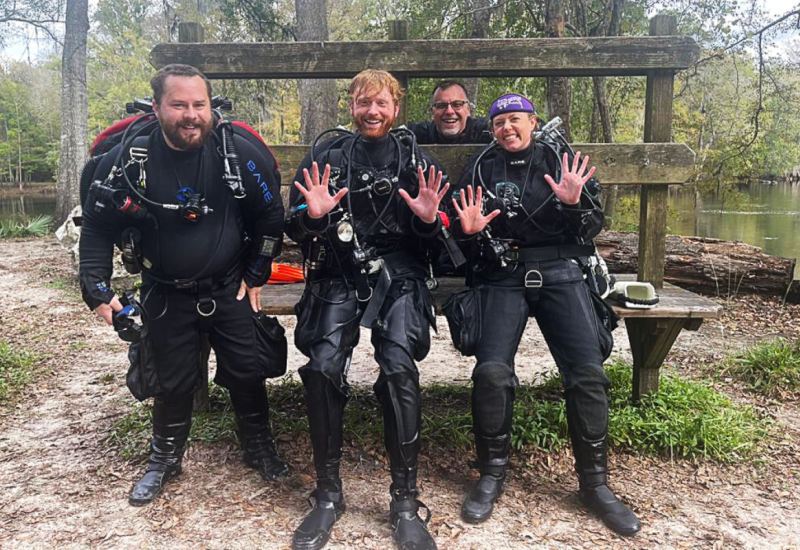Dive Gear Essentials: Scuba Regulators

Scuba Regulators open
Do you want an entry-level scuba regulator that breathes great on the reef, or do you need a rugged system that can breathe under ice at 100 feet? No matter what type of breathing system you're looking for, these tips will help you find the one that best suits your needs — and dive style.
Finding the Right Scuba Regulator
• Scuba regulators have two stages — the first stage (attached to the tank valve) reduces the high-pressure air from the tank to an intermediate pressure. The second stage (in your mouth) reduces the intermediate pressure to ambient pressure — allowing you to breathe comfortably underwater.
• First stages are either piston, which typically have some moving parts exposed to the water; or diaphragm, which have the moving parts isolated from the environment. Both types come either balanced or unbalanced. In simplest terms, a balanced reg means its breathing effort should remain the same regardless of tank pressure or depth. With an unbalanced reg, breathing effort may increase as tank pressure decreases or ambient pressure increases. For a more in-depth discussion of balanced versus unbalanced regulators, click here [/balanced-vs-unbalanced-regs-does-it-make-difference]
• When it comes to the choice between piston and diaphragm first stages, it really boils down to a preference in manufacturers and features. High-quality regulators often perform at similar levels regardless of the piston versus diaphragm question. While most of the top piston first stages are technically capable of moving a higher volume of air than comparable diaphragm systems, high-end systems are capable of delivering more air than a diver is able to draw, making that aspect purely academic.
• Piston regs typically have fewer moving parts, giving them a reputation for reliability, and many divers feel they have a quicker response to diver demands. Once again, for divers in the majority of recreational diving situations this would be imperceptible. Some piston regs have intermediate pressure ports on a swiveling turret that allows for easier hose routing, particularly in applications requiring additional hoses, such as drysuit diving.
• Diaphragm regulators have their moving parts isolated from the environment and would be less susceptible to corrosion of the primary components if cared for properly. The most compact and lightest travel regulators currently on the market have diaphragm first stages.
• For very cold or dirty-water use, both systems would require an environmental seal kit to ensure the best performance, with some of the piston regulators using a more expensive “wet” environmental seal system compared to the dry seal typically used on diaphragm first stages.
• Second stages come in various sizes and configurations and, similar to the first stages, come in both balanced and unbalanced systems. Your choice in second stages is frequently determined by the first stage, with manufacturers selling them as matched sets, but available variations make it possible to select a second stage appropriate to your diving needs — e.g., have a large purge button if you generally dive in thick gloves or mitts, smaller or lighter housings for petite users, or specialized exhaust tees for underwater photography or video use.
• Second stages can be user adjustable, most commonly with a venturi (“Dive”/“Pre-Dive”) setting, and in some cases with a “cracking pressure” adjustment.
• Changing venturi settings allows you to adjust the sensitivity of the airflow, helping to prevent free flow at the surface or improve performance in strong surface currents. Adjusting the “cracking pressure” alters the sensitivity of the second stage’s demand valve potentially reducing the force of inhalation required to start the air flow, a feature particularly useful for very deep diving.
Scuba Regulators: What You Need To Know **
**• Generally, all scuba regulators today are compatible with Enriched Air/Nitrox, up to 40%, right out of the box. Be sure to check the manufacturer’s recommendations first.
• Regs need to be serviced at least once a year, unless otherwise specified by the manufacturer, even if they haven’t been used. An unused regulator can still have drying and loss of flexibility of the O-rings, which in turn can lead to impaired performance of the reg. For those dive warriors out there who spend more time wet than dry, you may actually need to service the regulator more frequently, as much as twice a year.
Bottom Line: For the majority of divers, the most important factors to consider, besides cost, should be balanced versus unbalanced first and second stages, manufacturer warranty, access to servicing and technical support from a local dive center, and possibly size and weight for travel systems or for more petite divers.

Do you want an entry-level scuba regulator that breathes great on the reef, or do you need a rugged system that can breathe under ice at 100 feet? No matter what type of breathing system you're looking for, these tips will help you find the one that best suits your needs — and dive style.
Finding the Right Scuba Regulator
• Scuba regulators have two stages — the first stage (attached to the tank valve) reduces the high-pressure air from the tank to an intermediate pressure. The second stage (in your mouth) reduces the intermediate pressure to ambient pressure — allowing you to breathe comfortably underwater.
• First stages are either piston, which typically have some moving parts exposed to the water; or diaphragm, which have the moving parts isolated from the environment. Both types come either balanced or unbalanced. In simplest terms, a balanced reg means its breathing effort should remain the same regardless of tank pressure or depth. With an unbalanced reg, breathing effort may increase as tank pressure decreases or ambient pressure increases. For a more in-depth discussion of balanced versus unbalanced regulators, click here [/balanced-vs-unbalanced-regs-does-it-make-difference]
• When it comes to the choice between piston and diaphragm first stages, it really boils down to a preference in manufacturers and features. High-quality regulators often perform at similar levels regardless of the piston versus diaphragm question. While most of the top piston first stages are technically capable of moving a higher volume of air than comparable diaphragm systems, high-end systems are capable of delivering more air than a diver is able to draw, making that aspect purely academic.
• Piston regs typically have fewer moving parts, giving them a reputation for reliability, and many divers feel they have a quicker response to diver demands. Once again, for divers in the majority of recreational diving situations this would be imperceptible. Some piston regs have intermediate pressure ports on a swiveling turret that allows for easier hose routing, particularly in applications requiring additional hoses, such as drysuit diving.
• Diaphragm regulators have their moving parts isolated from the environment and would be less susceptible to corrosion of the primary components if cared for properly. The most compact and lightest travel regulators currently on the market have diaphragm first stages.
• For very cold or dirty-water use, both systems would require an environmental seal kit to ensure the best performance, with some of the piston regulators using a more expensive “wet” environmental seal system compared to the dry seal typically used on diaphragm first stages.
• Second stages come in various sizes and configurations and, similar to the first stages, come in both balanced and unbalanced systems. Your choice in second stages is frequently determined by the first stage, with manufacturers selling them as matched sets, but available variations make it possible to select a second stage appropriate to your diving needs — e.g., have a large purge button if you generally dive in thick gloves or mitts, smaller or lighter housings for petite users, or specialized exhaust tees for underwater photography or video use.
• Second stages can be user adjustable, most commonly with a venturi (“Dive”/“Pre-Dive”) setting, and in some cases with a “cracking pressure” adjustment.
• Changing venturi settings allows you to adjust the sensitivity of the airflow, helping to prevent free flow at the surface or improve performance in strong surface currents. Adjusting the “cracking pressure” alters the sensitivity of the second stage’s demand valve potentially reducing the force of inhalation required to start the air flow, a feature particularly useful for very deep diving.
Scuba Regulators: What You Need To Know **
**• Generally, all scuba regulators today are compatible with Enriched Air/Nitrox, up to 40%, right out of the box. Be sure to check the manufacturer’s recommendations first.
• Regs need to be serviced at least once a year, unless otherwise specified by the manufacturer, even if they haven’t been used. An unused regulator can still have drying and loss of flexibility of the O-rings, which in turn can lead to impaired performance of the reg. For those dive warriors out there who spend more time wet than dry, you may actually need to service the regulator more frequently, as much as twice a year.
Bottom Line: For the majority of divers, the most important factors to consider, besides cost, should be balanced versus unbalanced first and second stages, manufacturer warranty, access to servicing and technical support from a local dive center, and possibly size and weight for travel systems or for more petite divers.










